- Home
- P. D. James
The Murder Room Page 3
The Murder Room Read online
Page 3
“Adam Dalgliesh? I’ve heard of you.” He made it sound rather like an accusation. “A Case to Answer and Other Poems. I don’t read much modern poetry, having an unfashionable preference for verses which occasionally scan and rhyme, but at least yours aren’t prose rearranged on the page. I take it Muriel knows you’re here?”
Ackroyd said, “I signed in. And look, we’ve got our little stick-on labels.”
“So you have. Silly question. Even you, Ackroyd, wouldn’t get beyond the entrance hall if you hadn’t. A tyrant of a woman, but conscientious and, I’m told, necessary. Excuse my vehemence just now. I don’t usually lose my temper. With any of the Dupaynes it’s a waste of energy. Well, don’t let me interrupt whatever you’re here for.”
He turned to re-enter what was obviously his office. Ackroyd called after him, “What did you tell him, Neville Dupayne? What did you say the museum was for?”
Calder-Hale hesitated and turned. “I told him what he already knew. The Dupayne, like any reputable museum, provides for the safe custody, preservation, recording and display of items of interest from the past for the benefit of scholars and others interested enough to visit. Dupayne seemed to think it should have some kind of social or missionary function. Extraordinary!”
He turned to Ackroyd. “Glad to see you,” and then nodded to Dalgliesh. “And you, of course. There’s an acquisition in the picture gallery which might interest you. A small but agreeable water-colour by Roger Fry, bequeathed by one of our regular visitors. Let’s hope we’re able to keep it.”
Ackroyd asked, “What do you mean by that, James?”
“Oh, you couldn’t know, of course. The whole future of this place is in doubt. The lease runs out next month and a new one has been negotiated. The old man drew up a curious family trust. From what I gather, the museum can only continue if all three of his children agree to sign the lease. If it closes it will be a tragedy, but one which I personally have been given no authority to prevent. I’m not a trustee.”
Without another word he turned, went into his office and shut the door firmly.
Ackroyd said, “It will be something of a tragedy for him, I imagine. He’s worked here ever since his retirement from the Diplomatic Service. Unpaid, of course, but he gets the use of the office and conducts the favoured few round the galleries. His father and old Max Dupayne had been friends from university. For the old man the museum was a private indulgence, as of course museums tend to be for some of their curators. He didn’t exactly resent visitors—some were actually welcomed—but he thought one genuine enquirer was worth fifty casual visitors and acted accordingly. If you didn’t know what the Dupayne was and the opening hours, then you didn’t need to know. More information might attract casual passers-by wanting to come in out of the rain, hoping they might find something to keep the children quiet for half an hour.”
Dalgliesh said, “But a casual uninformed visitor could enjoy the experience, get a taste for it, discover the fascination of what in deplorable contemporary jargon we are encouraged to call ‘the museum experience.’ To that extent a museum is educational. Wouldn’t the Dupayne welcome that?”
“In theory, I suppose. If the heirs keep it on they may go down that path, but they haven’t got a lot to offer here, have they? The Dupayne is hardly the V and A or the British Museum. If you’re interested in the inter-war years—and I am—the Dupayne offers practically all you need. But the 1920s and ’30s have limited attraction for the general public. Spend a day and you’ve seen it all. I think the old man always resented the fact that the most popular room was the Murder Room. Now a museum devoted entirely to murder would do well. I’m surprised someone hasn’t set it up. There’s the Black Museum at New Scotland Yard and that interesting little collection the River Police have at Wapping, but I can’t see either of them being opened to the general public. Admissions strictly by application.”
The Murder Room was large, at least thirty feet long and well lit by three pendant lights, but for Dalgliesh the immediate impression was darkly claustrophobic despite the two easterly and the single south-facing windows. To the right of the ornate fireplace was a second and plain door, obviously permanently shut since it was without either doorknob or handle.
There were glass-fronted display cases along each wall with, below them, shelves for books, presumably dealing with each case, and drawers for relevant papers and reports. Above the cabinets were rows of sepia and black-and-white photographs, many enlarged, some obviously original and starkly explicit. The impression was of a collage of blood and blank dead faces, of murderers and victims united now in death, staring into nothingness.
Together Dalgliesh and Ackroyd made a tour of the room. Here displayed, illustrated and examined, were the most notorious murder cases of the inter-war years. Names, faces and facts swam into Dalgliesh’s memory. William Herbert Wallace, younger, surely, than at the time of the trial, an unmemorable but not unappealing head rising from the high stiff collar with its tie knotted like a noose, the mouth a little loose under the moustache, the eyes mild behind steel-rimmed spectacles. Beside it was a press photograph of him shaking hands with his counsel after the appeal, his brother at his side, both rather taller than anyone in the group, Wallace a little stooped. He had dressed carefully for the most appalling ordeal of his life, in a dark suit and the same high collar and narrow tie. The sparse hair, carefully parted, gleamed with brushing. It was a face somehow typical of the meticulous over-conscientious bureaucrat, not perhaps a man whom housewives, paying over their weekly pittance, would invite into the back room for a chat and a cup of tea.
Ackroyd said, “And here’s the beautiful Marie-Marguerite Fahmy, who shot her Egyptian playboy husband, in the Savoy Hotel of all places, in 1923. It’s remarkable for Edward Marshall Hall’s defence. He brought it to a crashing conclusion by pointing the actual gun at the jury, then letting it fall with a clatter while he demanded a not guilty verdict. She did it, of course, but thanks to him she got away with it. He also delivered an objectionably racist speech suggesting that women who marry what he called ‘the Oriental’ could expect the kind of treatment she received. Nowadays he’d be in trouble with the judge, the Lord Chancellor and the press. Again, you see, dear boy, we have a crime typical of its age.”
Dalgliesh said, “I thought you were depending on the commission of the crime for your thesis, not the workings of the then criminal justice system.”
“I’m relying on all the circumstances. And here’s another example of a successful defence, the Brighton Trunk Murder in 1934. This, my dear Adam, is supposed to be the actual trunk in which Tony Mancini, a twenty-six-year-old waiter and convicted thief, stuffed the body of his prostitute mistress, Violette Kaye. This was the second Brighton trunk murder. The first body, a woman without head and legs, had been found at Brighton railway station eleven days earlier. No one was ever arrested for that crime. Mancini was tried at Lewes Assize Court in December and brilliantly defended by Norman Birkett. Birkett saved his life. The jury returned a verdict of not guilty, but in 1976 Mancini confessed. This trunk seems to exert a morbid fascination on visitors.”
It held no fascination for Dalgliesh. Suddenly he felt the need to look at the outside world and walked over to one of the two easterly windows. Below, set among saplings, was a wooden garage and, within eight yards, a small garden shed with a water tap. The boy he had seen in the drive was washing his hands and then rubbing them dry on the side of his trousers. He was recalled to the room by Ackroyd, anxious to demonstrate his last case.
Leading Dalgliesh to the second of the display cabinets, he said, “The Blazing Car Murder, 1930. This is certainly a candidate for my article. You must have heard of it. Alfred Arthur Rouse, a thirty-seven-year-old commercial traveller living in London, was a compulsive womanizer. Apart from committing bigamy, he is supposed to have seduced some eighty women during the course of his travels. He needed to disappear permanently, preferably to be thought dead, so on sixth November he picked up a
tramp and on a lonely road in Northamptonshire killed him, threw petrol over him, set the car alight and made off. Unfortunately for him, two young men walking home to their local village saw him and asked him about the blaze. He went on his way, calling out, ‘It looks as though someone is having a bonfire.’ That encounter helped to get him arrested. If he’d hidden in the ditch and let them go by he might have got away with it.”
Dalgliesh said, “And what makes it specific to its age?”
“Rouse had served in the war and was badly injured in the head. His behaviour at the scene and at the trial was exceptionally stupid. I see Rouse as a casualty of the First World War.”
He might well have been, thought Dalgliesh. Certainly his behaviour after the murder and his extraordinary arrogance in the witness-box had done more than the prosecuting counsel to put the rope around his neck. It would have been interesting to know the extent of his war service and how he had been wounded. Few men who had served long in Flanders could have returned home completely normal.
He left Ackroyd to his researches and went in search of the library. It was on the west side of the same floor, a long room with two windows facing the car-park and a third overlooking the drive. The walls were lined with mahogany bookcases with three jutting bays and there was a long rectangular table in the middle of the room. At a smaller table near the window there was a photocopying machine with a notice saying that copies were ten pence per sheet. Beside it sat an elderly woman writing labels for exhibits. The room wasn’t cold but she wore a muffler and mittens. As Dalgliesh entered, she said in a mellifluous, educated voice, “Some of the glass cabinets are locked but I have the key if you want to handle the books. Copies of The Times and other newspapers are in the basement.”
Dalgliesh had some difficulty in knowing how to reply. With the picture gallery still to see, he had no time to examine the books at leisure, but he didn’t wish his visit to seem peremptory, the mere indulgence of a whim. He said, “It’s my first visit so I’m just making a preliminary tour. But thank you.”
He walked slowly along the bookcases. Here, the majority in first editions, were the major novelists of the inter-war years and some whose names were unknown to him. The obvious names were represented: D. H. Lawrence, Virginia Woolf, James Joyce, George Orwell, Graham Greene, Wyndham Lewis, Rosamond Lehmann, a roll-call of the variety and richness of those turbulent years. The poetry section had a case of its own which contained first editions of Yeats, Eliot, Pound, Auden and Louis MacNeice. There were also, he saw, the war poets published in the 1920s: Wilfred Owen, Robert Graves, Siegfried Sassoon. He wished that he had hours at his disposal in which the books could be handled and read. But even had there been time, the presence of that silent working woman, her cramped mittened hands moving laboriously, would have inhibited him. He liked to be alone when he was reading.
He moved to the end of the central table where half a dozen copies of The Strand Magazine were fanned out, their covers, differently coloured, all showing pictures of the Strand, the scene slightly varying with each copy. Dalgliesh picked up the magazine for May 1922. The cover advertised stories by P. G. Wodehouse, Gilbert Frankau and E. Phillips Oppenheim and a special article by Arnold Bennett. But it was in the preliminary pages of advertisements that the early 1920s most came alive. The cigarettes at five shillings and sixpence per hundred, the bedroom that could be furnished for £36 and the concerned husband, worried about what was obviously his wife’s lack of libido, restoring her to her usual good spirits with a surreptitious pinch of liver salts in the early morning tea.
And now he went down to the picture gallery. It was at once apparent that it had been designed for the serious student. Each picture had beside it a framed card which listed the main galleries where other examples of the artist’s work could be seen and display cabinets on each side of the fireplace contained letters, manuscripts and catalogues. They drew Dalgliesh’s mind back to the library. It was on those shelves, surely, that the 1920s and ’30s were better represented. It was the writers—Joyce, Waugh, Huxley—not the artists who had most forcibly interpreted and influenced those confused inter-war years. Moving slowly past the landscapes of Paul and John Nash, it seemed to him that the 1914 through 1918 cataclysm of blood and death had bred a nostalgic yearning for an England of rural peace. Here was a prelapsarian landscape re-created in tranquillity and painted in a style which, for all its diversity and originality, was strongly traditional. It was a landscape without figures; the neatly piled logs against farmhouse walls, the tilled fields under unthreatening skies, the empty stretch of beach, were all poignant reminders of the dead generation. He could believe that they had done their day’s work, hung up their tools and gently taken their leave of life. Yet surely no landscape was so precise, so perfectly ordered. These fields had been tilled, not for posterity, but for a barren changelessness. In Flanders nature had been riven apart, violated and corrupted. Here all had been restored to an imaginary and eternal placidity. He had not expected to find traditional landscape painting so unsettling.
It was with a sense of relief that he moved to the religious anomalies of Stanley Spencer, the idiosyncratic portraits of Percy Wyndham Lewis and the more tremulous, casually painted portraits of Duncan Grant. Most of the painters were familiar to Dalgliesh. Nearly all gave pleasure, although he felt that these were artists strongly influenced by Continental and far greater painters. Max Dupayne had not been able to acquire the most notably impressive of each artist’s work but he had succeeded in putting together a collection which, in its diversity, was representative of the art of the inter-war years, and this, after all, had been his aim.
When he entered the gallery, there was one other visitor already there: a thin young man wearing jeans, worn trainers and a thick anorak. Beneath its bulky weight, his legs looked as thin as sticks. Moving closer to him, Dalgliesh saw a pale, delicate face. His hair was obscured by a woollen cap drawn over the ears. Ever since Dalgliesh had entered the room the boy had been standing motionless in front of a war painting by Paul Nash. It was one Dalgliesh also wanted to study and they stood for a minute silently, side by side.
The painting, which was named Passchendaele 2, was unknown to him. It was all there, the horror, the futility and the pain, fixed in the bodies of those unknown, ungainly dead. Here at last was a picture which spoke with a more powerful resonance than any words. It was not his war, nor his father’s. It was now almost beyond the memory of living men and women. Yet had any modern conflict produced such universal grieving?
They stood together in silent contemplation. Dalgliesh was about to move away when the young man said, “Do you think this is a good picture?”
It was a serious question but it provoked in Dalgliesh a wariness, a reluctance to appear knowledgeable. He said, “I’m not an artist, nor an art historian. I think it’s a very good picture. I’d like it on my wall.”
And for all its darkness it would, he thought, find its place in that uncluttered flat above the Thames. Emma would be happy for it to be there, would share what he was feeling now.
The young man said, “It used to hang on my grandad’s wall in Suffolk. He bought it to remember his dad, my great-grandad. He was killed at Passchendaele.”
“How did it get here?”
“Max Dupayne wanted it. He waited until Grandad was desperate for money and then he bought it. He got it cheap.”
Dalgliesh could think of no appropriate response, and after a minute he said, “Do you come to look at it often?”
“Yes. They can’t stop me doing that. When I’m on job-seekers’ allowance I don’t have to pay.” Then, turning aside, he said, “Please forget what I’ve said. I’ve never told anyone before. I’m glad you like it.”
And then he was gone. Was it perhaps that moment of unspoken communication before the picture which had provoked such an unexpected confidence? He might, of course, be lying, but Dalgliesh didn’t think so. It made him wonder how scrupulous Max Dupayne had been in pursuit of h
is obsession. He decided to say nothing to Ackroyd about the encounter and after one more slow circuit of the room took the wide staircase up from the hall back to the Murder Room.
Conrad, seated in one of the armchairs beside the fireplace and with a number of books and periodicals spread out on the table before him, was not yet ready to leave. He said, “Did you know that there’s now another suspect for the Wallace murder? He didn’t come to light until recently.”
“Yes,” said Dalgliesh, “I had heard. He was called Parry, wasn’t he? But he’s dead too. You’re not going to solve the crime now, Conrad. And I thought that it was murder related to its time not the solution which interested you.”
“One gets drawn in deeper, dear boy. Still, you’re quite right. I mustn’t allow myself to be diverted. Don’t worry if you have to leave. I’m just going to the library to make some copies and I’ll be here until the place closes at five. Miss Godby has kindly offered me a lift as far as Hampstead tube station. A kind heart beats in that formidable bosom.”
A few minutes later Dalgliesh was on his way, his mind preoccupied with what he’d seen. Those inter-war years in which England, her memory seared by the horrors of Flanders and a generation lost, had stumbled through near dishonour to confront and overcome a greater danger, had been two decades of extraordinary social change and diversity. But he wondered why Max Dupayne had found them fascinating enough to dedicate his life to recording them. It had, after all, been his own time he was memorializing. He would have bought the first-edition fiction and preserved the papers and the journals as they appeared. These fragments I have shored against my ruins. Was that the reason? Was it he himself that he needed to immortalize? Was this museum, founded by him and in his name, his personal alms to oblivion? Perhaps this was one attraction of all museums. The generations die, but what they made, what they painted and wrote, strove for and achieved, was still here, at least in part. In making memorials, not only to the famous but to the legions of the anonymous dead, were we hoping to ensure our own vicarious immortality?

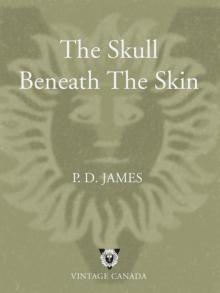 The Skull Beneath the Skin
The Skull Beneath the Skin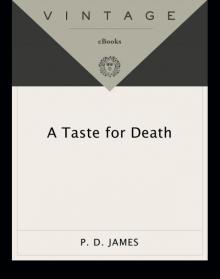 A Taste for Death
A Taste for Death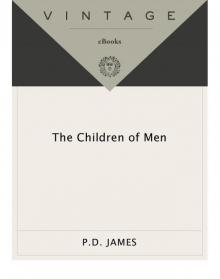 The Children of Men
The Children of Men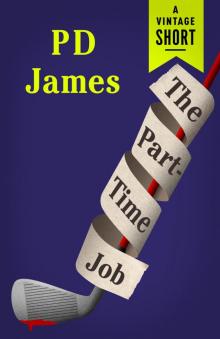 The Part-Time Job
The Part-Time Job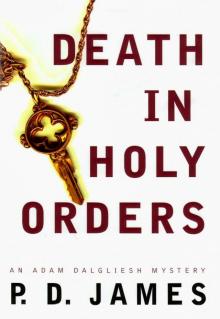 Death in Holy Orders
Death in Holy Orders The Victim
The Victim Shroud for a Nightingale
Shroud for a Nightingale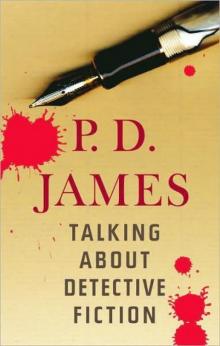 Talking about Detective Fiction
Talking about Detective Fiction Sleep No More
Sleep No More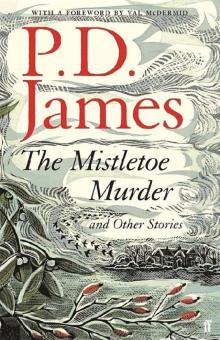 The Mistletoe Murder and Other Stories
The Mistletoe Murder and Other Stories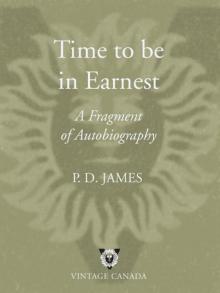 Time to Be in Earnest
Time to Be in Earnest Original Sin
Original Sin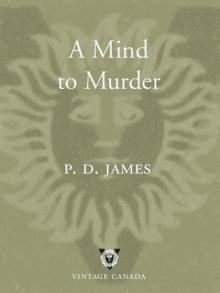 A Mind to Murder
A Mind to Murder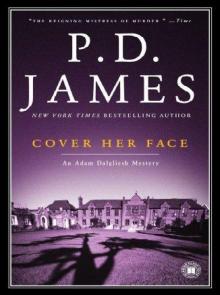 Cover Her Face
Cover Her Face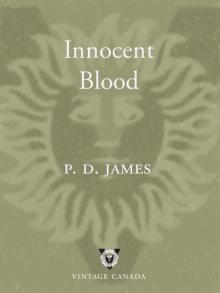 Innocent Blood
Innocent Blood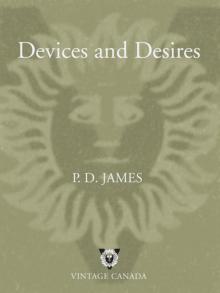 Devices and Desires
Devices and Desires Sleep No More: Six Murderous Tales
Sleep No More: Six Murderous Tales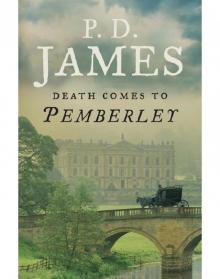 Death Comes to Pemberley
Death Comes to Pemberley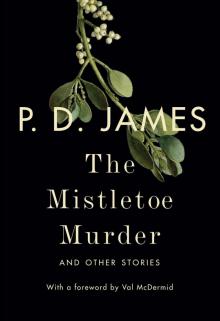 The Mistletoe Murder
The Mistletoe Murder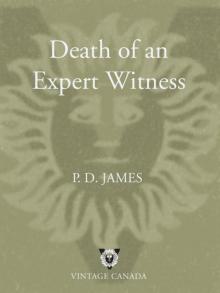 Death of an Expert Witness
Death of an Expert Witness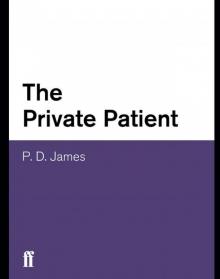 The Private Patient
The Private Patient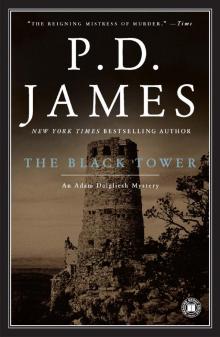 The Black Tower
The Black Tower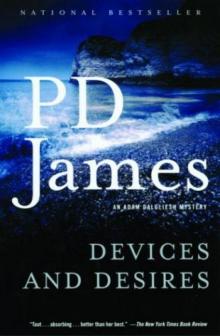 Devices & Desires - Dalgleish 08
Devices & Desires - Dalgleish 08 Unnatural Causes
Unnatural Causes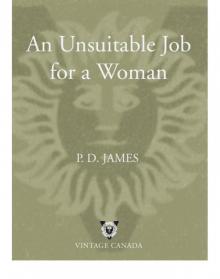 An Unsuitable Job for a Woman
An Unsuitable Job for a Woman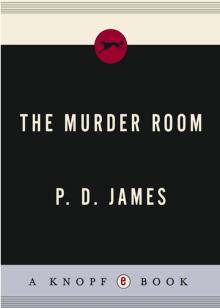 The Murder Room
The Murder Room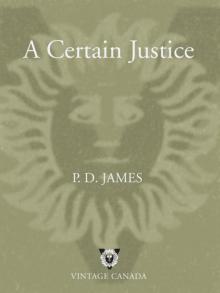 A Certain Justice
A Certain Justice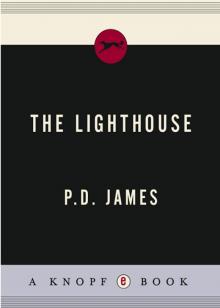 The Lighthouse
The Lighthouse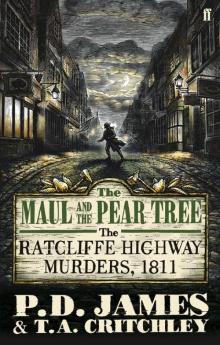 The Maul and the Pear Tree
The Maul and the Pear Tree